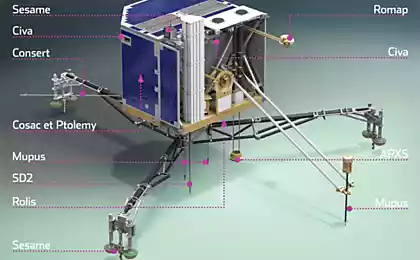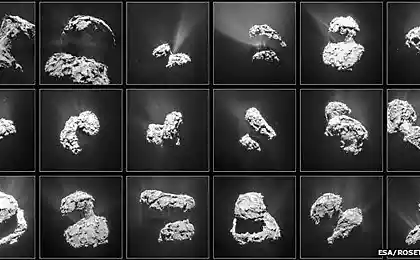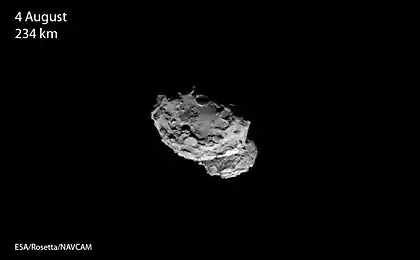1533
Interplanetary probe Rosetta has sent a clear shot most of the nucleus of comet Churyumov-Gerasimenko, the comet nucleus appeared dual

August 6, the day the interplanetary probe Rosetta comet orbit Churyumov Gerasimenko closer. This means that the station itself is approaching comet, now the object of research and the spacecraft will not chop up millions and hundreds of thousands of kilometers, and a total of about 9000 kilometers.
The other day, Rosetta and made the most detailed, at the moment, a snapshot of the nucleus of the comet, from a distance of about 12 thousand kilometers.
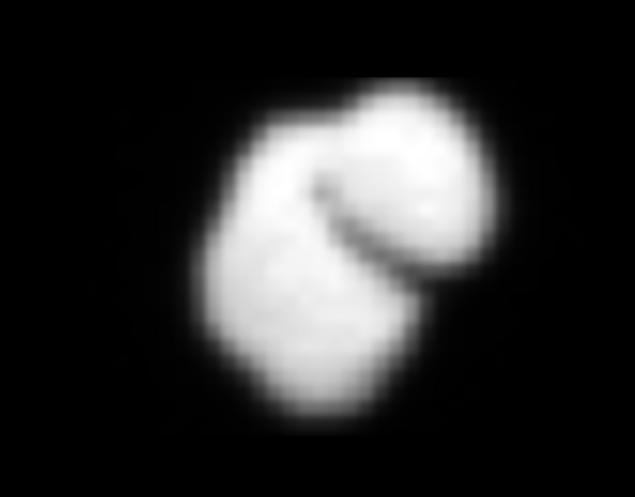
Little movement:

It turned out that the comet nucleus is in the form of irregular eight. Such "double" kernel - not so rare, for example, Comet 8P / Tuttle has a similar structure.
However, this form of the nucleus of comet Churyumov Gerasimenko makes it even more interesting subject for study. One of the popular theories that seek to explain this form of kernel states that "eight" - a consequence of the merger of two comets that "fused" together during the evolution of the solar system billions of years ago. It was then, as stated in another theory, formed in a similar way and the planet.
Or maybe the other way: a single comet nucleus acquires a similar shape as a result of the impact of a powerful gravitational field objects like Jupiter or the sun. Rather, once the nucleus of comet Churyumov single now-Gerasimenko still divided into two parts, and we will have two comets, not one.
In general, the comet is interesting to study, but it is such a shape makes landing probe Filae more difficult than planned. Presumably until August 6, and after that date scientists have reason to smash his head.
By the way, recently the most detailed picture of the comet's nucleus, made apparatus looked like this:
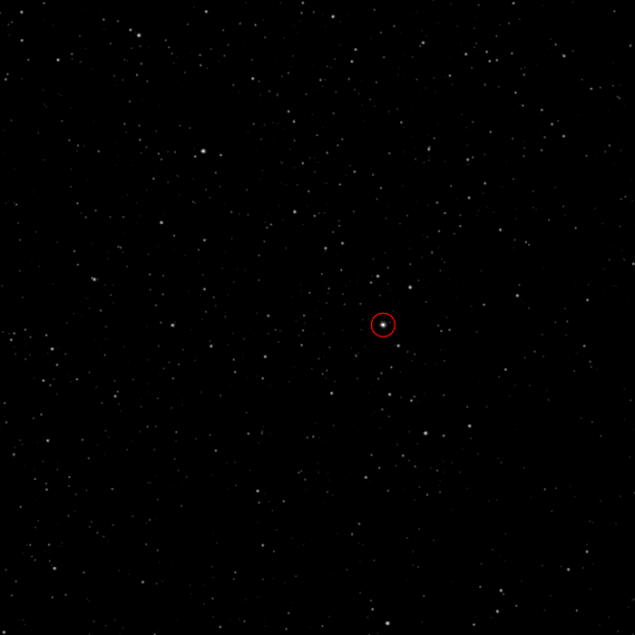
It is worth mentioning that some time after the release of a planned point in the orbit of the comet, the station will release a probe Filae, which falls on the surface of the outer body. If all goes well, scientists will be able to get a lot of information about the composition of the comet's nucleus, the evaporation of substances from the body of the comet under the influence of the Sun, the composition of the emissions.
Studying the expiration of steam / gas composition of the "tail" of the comet - an important task, which allows us to trace the evolution of cometary material, to investigate the effect of evaporation on the motion of the comet close to the celestial bodies, as well as to explain the processes of evolution of the solar system. It is possible that the study of comets and helps explain the appearance of water on our planet.
Via nasa
Source: habrahabr.ru/post/230287/














